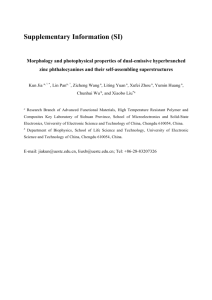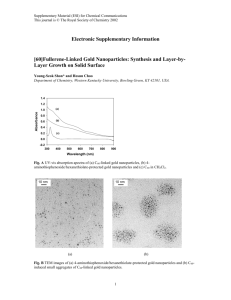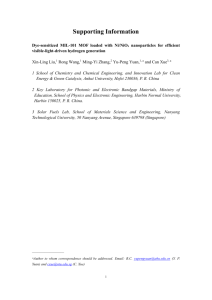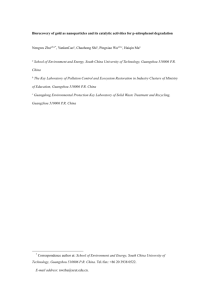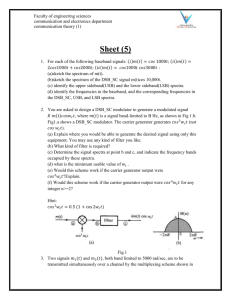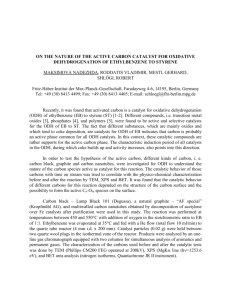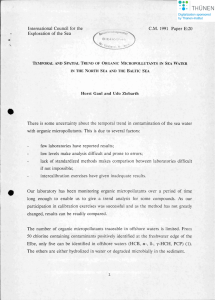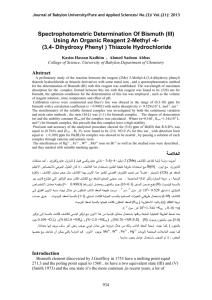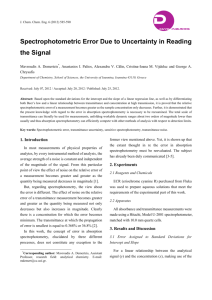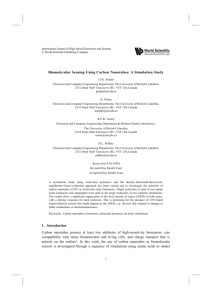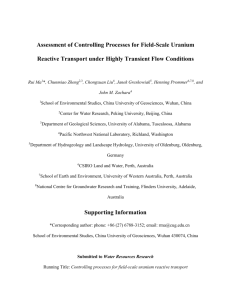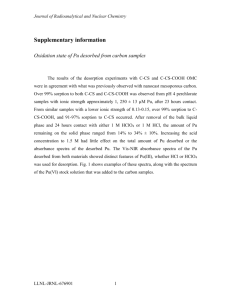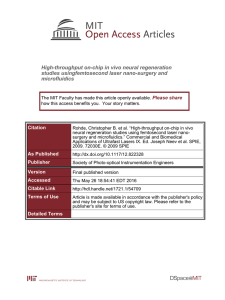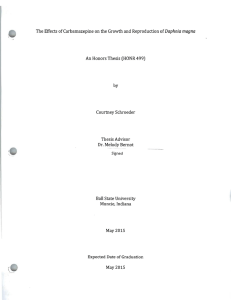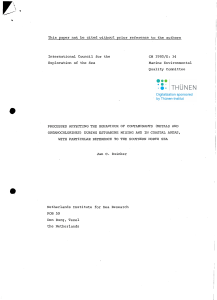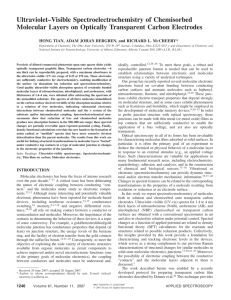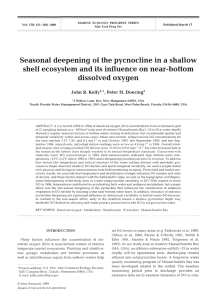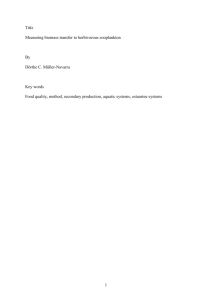etc3340-sup-0001-SuppData
advertisement
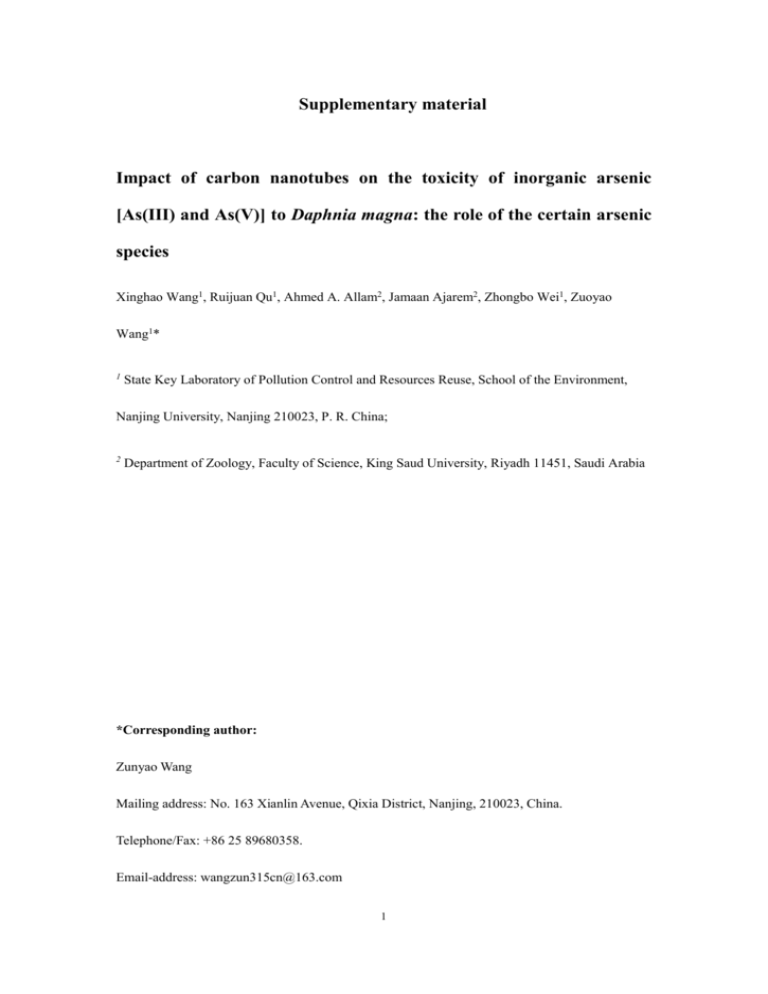
Supplementary material Impact of carbon nanotubes on the toxicity of inorganic arsenic [As(III) and As(V)] to Daphnia magna: the role of the certain arsenic species Xinghao Wang1, Ruijuan Qu1, Ahmed A. Allam2, Jamaan Ajarem2, Zhongbo Wei1, Zuoyao Wang1* 1 State Key Laboratory of Pollution Control and Resources Reuse, School of the Environment, Nanjing University, Nanjing 210023, P. R. China; 2 Department of Zoology, Faculty of Science, King Saud University, Riyadh 11451, Saudi Arabia *Corresponding author: Zunyao Wang Mailing address: No. 163 Xianlin Avenue, Qixia District, Nanjing, 210023, China. Telephone/Fax: +86 25 89680358. Email-address: wangzun315cn@163.com 1 Supplementary 1. Characterization of the OH-MWCNTs The OH-MWCNTs samples were thoroughly characterized, including the metal impurities, diameters, dispersivity, and hydroxyl group contents. Briefly, the concentrations of the metals in 5% HNO3 solution for 24 h were determined using an Inductive Coupled Plasma Mass Spectrometer (ICP-MS, NexION 300x, PerkinElmer, Massachusetts, USA). The OH-MWCNTs were examined using X-ray diffraction spectroscopy (X’TRA, ARL, Switzerland) to verify the absence of metals in the samples. The morphologies and sizes (diameter and length) of the OH-MWCNTs were examined using a transmission electron microscopy (TEM, JEM-200CX, JEOL, Japan) and a field emission scanning electron microscopy (FE-SEM, S-4800, Hitachi, Japan) operated at 120 kV and 25 kV, respectively. The hydroxyl group contents on the OH-MWCNTs surfaces were determined using X-ray photoelectron spectroscopy (PHI 5000 VersaProbe, Ulvac-Phi, Japan) with Mg Kα (1253.6 eV) radiation. Quantitative analyses (Peng et al., 2011) using high-resolution C1s XPS spectra and curve fitting were performed to determine the relative percentage of surface functionalized moieties. 2 Supplementary 2. Dispersion of carbon nanotubes and stability of OH-MWCNTs in suspension The dispersions of OH-MWCNTs were examined by scanning UV-Vis spectrometry (TU-1800, Persee, China), and the absorbance spectra of 15 mg/L OH-MWCNTs solutions were shown in the Fig. S1. And the spectra of OH-MWCNTs with a distinct peak at about 255 were obtained, which was consistent with previous reports about MWCNTs (Long et al., 2012). The absorbance values have a highly linear correlation with the OH-MWCNTs concentrations (Fig. S2). Meanwhile, the stabilities of the OH-MWCNT dispersions (0.1, 1 and 5 mg/L) were quantitatively determined using the above method. Stability was evaluated by determining the absorbance of OH-MWCNT samples in the absence and presence of D. magna at different times (0, 4, 8, 12, 15, 21 and 24 h). The quantification of OH-MWCNTs over time in aerated tap water was conducted by constructing standard curves using fresh suspensions of known concentrations (Fig. S3). 3 Fig. S1 The absorbance spectra for 15 mg/L OH-MWCNTs solutions at the scanning wavelength from 200 nm to 800 nm. The gray line presents the distinct peak at about 255 nm. 4 Fig. S2 The relationship between the absorbances at the corresponding distinct peak value and OH-MWCNTs concentrations in the MilliQ water. The solid line presents the linear fitting results. 5 Fig. S3 The concentrations of OH-MWCNTs remaining in exposure suspensions during 24 h. A and B represent without or with D. magna. (■):0.1 mg/L; (▲): 1 mg/L; (▼): 5 mg/L. All the values are the means of 3 replicates, and the standard deviations are generally smaller than the dot sizes. 6 3. Acute toxicity QC Several additional experiments were performed to verify the validity of the immobilization experiments. The toxicological end point mortality was measured as immobilization, which means that the neonates remained settled at the bottom of the beakers and did not resume moving within 15 s of observation after gentle agitation of the test solution. Tests in which death occurred in the control exposure were considered invalid. Control containers with daphnia exposed to the aerated tap water were utilized during each experiment and consistently yielded less than 1 %, which is acceptable within test guidelines for OECD Guideline 202. The measured 48-h LC50 value for the potassium dichromate was 1.22 ± 0.15 mg/L (uncertainty represents the 95 % confidence interval) which is within the range of 0.6 to 2.1 specified for daphnia neonates in OECD Guideline 202. Additionally, all these immobilization experiments were repeated and reproducible results were obtained. 7 References Long, Z., Ji, J., Yang, K., Lin, D., Wu, F., 2012. Systematic and quantitative investigation of the mechanism of carbon nanotubes’ toxicity toward algae. Environ. Sci. Technol. 46 (15), 8458-8466. Peng, K., Liu, L.Q., Li, H.C., Meyer, H., Zhang, Z., 2011. Room temperature functionalization of carbon nanotubes using an ozone/water vapor mixture. Carbon 49 (1), 70-76. 8
